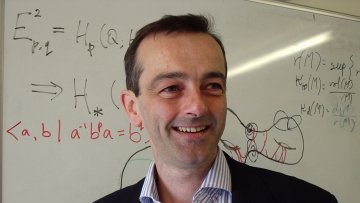12:00
Prandtl equations in Sobolev Spaces
Abstract
The Mathematical Finance Group in Oxford has long been a leader in research on financial mathematics. In recent years a number of research areas have become key focal points within the Group, notably behavioural finance and financial big data, robust pricing and machine learning. In particular, research has focused on financial stability, an area that became critical after the Financial Crisis in 2008.
Cutkosky rules and Outer Space
Abstract
Amplitudes in quantum field theory have discontinuities when regarded as
functions of
the scattering kinematics. Such discontinuities can be determined from
Cutkosky rules.
We present a structural analysis of such rules for massive quantum field
theory which combines
algebraic geometry with the combinatorics of Karen Vogtmann's Outer Space.
This is joint work with Spencer Bloch (arXiv:1512.01705).
When you think about the founders of computing you may think Alan Turing, you may even think Charles Babbage. But you should definitely think about Ada Lovelace. Ada Lovelace is not only the link between Babbage and Turing, but a woman of fierce originality and intellectual interests whose ideas went beyond Babbage’s ideas of computers as manipulating numbers, and focused on their creative possibilities and their limits, the very issues with which we are wrestling today.
12:00
Concentration Compactness for the Critical Maxwell-Klein-Gordon Equation
Abstract
12:00




